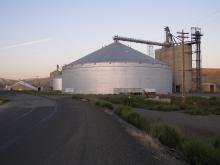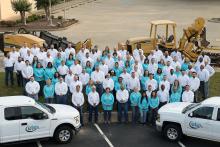
Anacortes, Washington, has been working toward a publicly owned fiber optic network for several years. They’re now at a point in development when potential partners are visiting the community to present proposals for collaboration. There are still details to decide, but Anacortes is well on its way to fast, affordable, reliable connectivity to the entire community.
Building On The Water
Anacortes wanted better connectivity between water treatment plants and pumping stations, which were previously communicating via radio. Nonprofit Northwest Open Access Network (NoaNet) began working with Anacortes in 2016 to help them design the network to meet the needs of the water utility. As part of preparation for the new infrastructure, Anacortes decided last year to take advantage of existing water pipes as conduit, adopting a new approach in the U.S.
The fiber system for the utility communications will serve as the basis for the citywide network. Anacortes has already deployed a fiber optic backbone in the eastern half of the city by aerial and underground means and plans to continue to the western half this year.
Last fall, community leaders reached out to residents and businesses to find out their needs for better connectivity and to gauge interest in a publicly owned network. They asked the community to complete a survey. Respondents indicated that speed, reliability, and price are major concerns for them.
Frontier DSL, Comcast, and Wave Cable now offer Internet access in the community of 16,800, but the community wants to prepare for the future and know that they need fiber optic connectivity in Anacortes for economic development.
In January, the city released a Request for Qualifications (RFQ) to find an ISP to manage and operate its infrastructure and offer Internet access to the community. While they had considered an open access model in the past, they’ve now decided to choose one entity to partner with while considering opening up the network to more providers in the future. Westminster, Maryland, has taken a similar approach; the city has an exclusive agreement with ISP Ting Internet for a limited period of time. After the contract period is over, they have the option to renew with a similar arrangement or engage other ISPs to also operate via their infrastructure.
ISPs Come A Courtin’
At a recent meeting of the City Council, three ISPs presented their proposals for working with Anacortes to bring fiber optic connectivity to residents and businesses. NoaNet and iFiber offered a joint proposal, Rock Island Communications, and Wave Cable also presented their plans.
As an incumbent provider that already serves about 4,000 customers in the county and operates some of its own fiber optic infrastructure, Wave told the Council that it’s ready to partner with local communities. Wave Resident Product Manager Amy Thompson told the Council, “This conversation is happening with other (cities) as well...And we’re open to the idea of being part of it.”
Rock Island Communications already partners with the Orcas Power and Light Cooperative in the San Juan Islands. Their Executive Vice President suggested connecting premises close to the existing infrastructure first and setting up fixed wireless temporarily to attract subscribers:
The wireless option would work for Anacortes to get customers on board while they wait for fiber, he said.
"You don’t want to leave people behind in this effort, which is key to the project,” he said.
iFiber partners with fiber optic infrastructure owners - public and private - to offer services to subscribers. They and NoaNet presented a proposal that would involve the latter as the network operator and iFiber as the ISP, offering Internet access, phone, and video.
No Business Plan...Yet
The city invested $1.7 million to deploy the fiber backbone that will be integrated into the larger network. Community leaders still need to answer the question of cost, which may be easier to estimate once they’ve chosen a partner. Anacortes appears to be firm on keeping the infrastructure publicly owned.
In January, Public Works Director Fred Buckenmeyer told the City Council that the next phase of the project will include pilot programs in two neighborhoods to test the system. Connecting both neighborhoods will cost approximately $78,000; they hope to get both pilots up and running this summer. In January, city officials were unsettled about who should bear the cost of installation, about $1,000 per premise. They’ve considered an option in which property owners would pay the connectivity fee, but do so in monthly installments.
“We go back and forth on how to fund this,” [Council Member Bruce] McDougall said. “If you tell neighborhoods or individuals to come up with a big upfront construction cost of $1,000, that’s going to reduce the amount of people who sign up significantly.”
...
“It’s a relatively new business model,” McDougall said. “The operation is going to be a challenge, and I expect hurdles.”
As community leaders move forward with their business plan and considering the proposals presented by each of the potential partners, clarifying their vision will be a key element to establishing the network the community wants.
“The ‘why’ has more to do with strategic goals about controlling our technological future,” [McDougall] said. “We’re going to need to talk about what that means to us and make sure what it means to us lines up with what it means to the community.”







